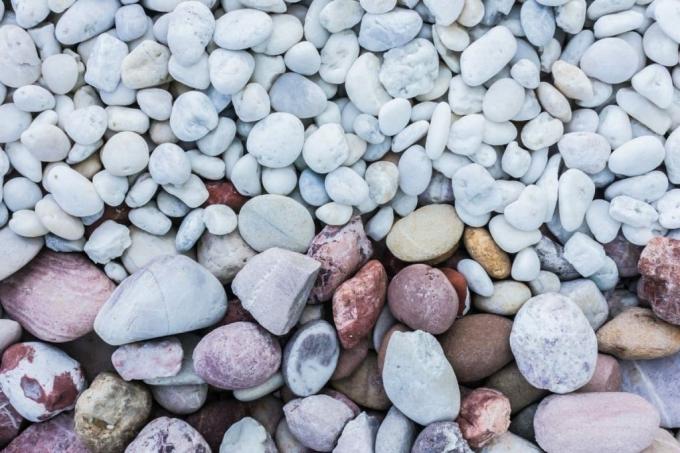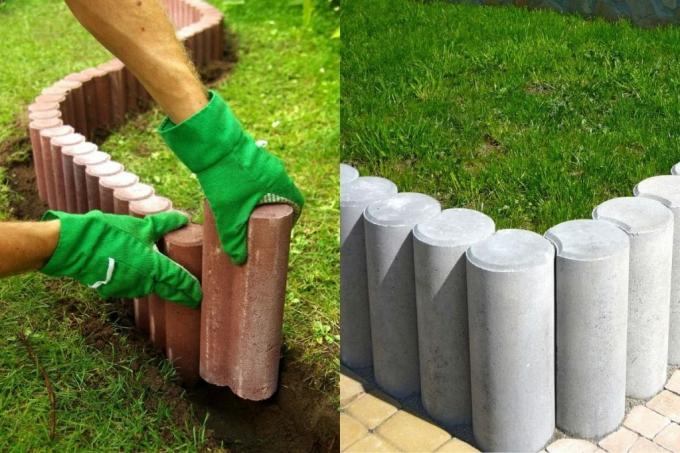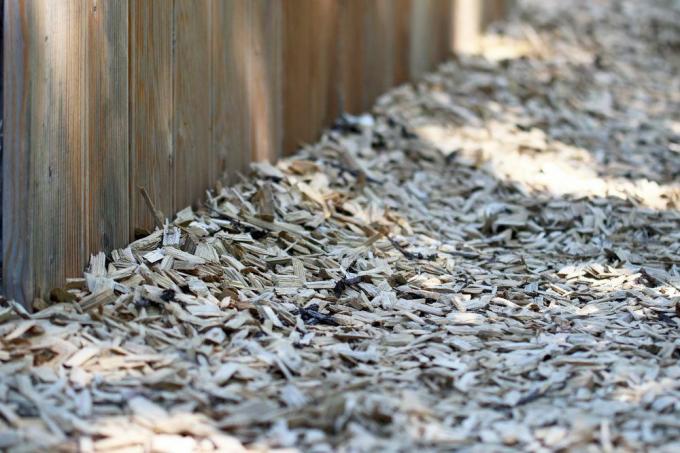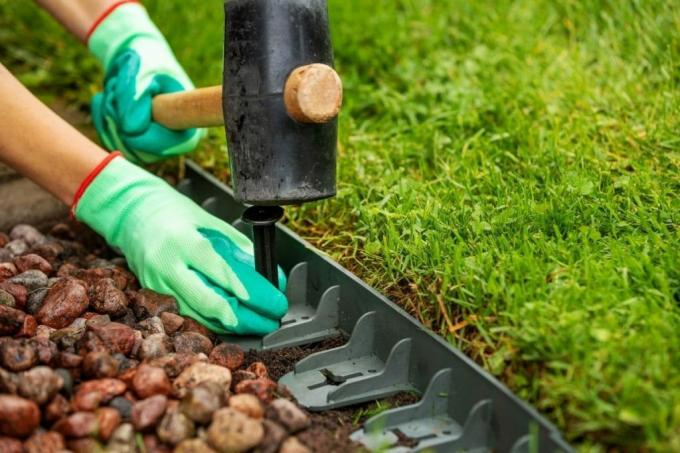
table of contents
- Lawn edges
- Curbs
- Alternatives made of stone
- Wooden alternatives
- Other materials for lawn edging
- frequently asked Questions
So that the race has a neat finish, it is often edged with a lawn edge made of kerbstones. However, this is not for everyone. There are a few other variants that are listed here.
In a nutshell
- Curbs are the common practice
- flat stones can be run over with a lawnmower
- There are alternatives made of different materials
- including rubber, plastic and wood
- other stone variants are also possible
Lawn edges
The job of lawn borders is to keep the grass from growing and to ensure that the lawn has a clean outline. Lawn edges save the tedious work of cutting off the lawn or removing grass from the paths.

Curbs
In most cases, stone elements are used that are dug into the earth around the lawn. Some of the stones need to be set in concrete for better durability. Depending on the construction, the curbs can be driven over with the lawnmower and thus enable a smooth cutting edge. Curb stones look neat because of their geometric shape, but that is precisely why they are not suitable for every gardener or garden.
Alternatives made of stone
River stones
A border made of river stones looks more natural than stone elements. However, you need to thoroughly prepare the soil for this, otherwise the grass will grow through the stones. The topsoil is removed about as deep as a spatula. For better weed suppression, place a mulch film in the trench. You pour the river stones on it. Depending on the dumping height, the river pebbles can still be driven over with the lawnmower. There should be enough space between the knife and the stones so that the knives do not become blunt as quickly. The border between lawns and beds or paths is not as strict as with kerbstones and looks more relaxed. River pebbles are available in different sizes as bulk goods in the garden or hardware store.

Palisades
Stone palisades are available piece by piece in hardware stores, the material is either natural stone or concrete. They are simply dug into the earth like borders made of curbs. In places where there is a risk of severe frost that could move the ground, it is better to concrete the stones. Stone palisades come in different sizes, round or square. They are suitable for different heights.

Planting rings
Plant rings are suitable as lawn edges where additional planting is desired and where the massive stones do not interfere. After digging in, the stone rings can be planted with various plants that can cope with little space. The stone rings are then also suitable as a root barrier. With several rows of plant rings on top of each other, even greater differences in height can be overcome.

Mowing edges
In contrast to plant rings, the flat mowing edges are much more inconspicuous. After they have been buried flush with the ground, they do not interfere with mowing. Even so, they make it difficult for the grass to grow through. They are available in different colors and sizes in the garden center. Due to the curved lines, they are also suitable for curves and larger arcs.

Wooden alternatives
Palisades
Similar to stone palisades, there are wooden palisades round or square. They are dug into the ground around the lawn and then brought to the desired height with a hammer. Boiler pressure impregnated woods are particularly durable as lawn edging.
Note: If you have individual wishes, you can paint untreated palisades in your desired color.

Bed borders
Most of the time, wooden bed frames consist of several individual palisades that have been nailed to a rollboard. Some roll-up shelves are processed in such a way that individual palisades are longer and taper to a point. You only have to knock these into the ground so that the bed border stands.
Mulch
Bark mulch In contrast to other alternatives, it is not particularly durable, but is particularly suitable as a lawn edge for hedges or natural beds. You can lay the bark mulch like river pebbles. They renew it when it has decomposed.
Note: Bark mulch is cheaper than other alternatives. Therefore, it can be used as a temporary solution when the final boundary of the lawn has not yet been determined.

Other materials for lawn edging
rubber
Rubber surrounds are flexible and durable. Make sure that the material is weatherproof, otherwise the edging will gradually lose its good properties. A rubber edge is easy to process. You dig a trench, roll out the rubber band and lift it into it. Then just press the earth firmly all around.
plastic
Similar to rubber, plastic is also easy to process. Another advantage is the low weight of the material. However, there are enormous differences in quality, especially with plastic lawn edging. Cheap plastic quickly becomes brittle and can break. Connector systems make it easier to lay the border. They are just put together and then put into the ground. You need to work more carefully when mowing rubber or plastic lawn edging.

metal
The lawn can also be easily demarcated with metal. Depending on preference or use, the metal can be buried either at ground level or protruding.
Advantages of processing at ground level:
- barely visible
- protected against the weather
- no tripping hazard
- Can be driven over with the lawn mower
Advantages of the outstanding processing:
- keeps mulch in beds
- prevents overgrowth above ground
- decorative element in the garden

It is best to use stainless or galvanized metal. A narrow trench is simply dug for laying. With light soils, even loosening the soil is sufficient. Then hit the metal element into the ground with a hammer.
frequently asked Questions
That depends on the material in question. Metal and stone are very durable, they may never need to be replaced. Wood will rot over time, and rubber can wear away from mowing, just like plastic. Plastic also has the disadvantage that it often becomes unsightly over time.
If there is no limitation, the lawn must be prevented from growing about twice a year by cutting it off.
It ensures a clean boundary, but is not absolutely necessary for the lawn. Without an edge, there is often more work because the lawn grows unhindered in beds or on paths.
On the one hand, the material should withstand any weather, including frost, and on the other hand it shouldn't be offended if it comes into contact with the blades of the lawnmower. In the case of rubber and plastics, it is also important to ensure that they do not release any harmful substances into the ground.



